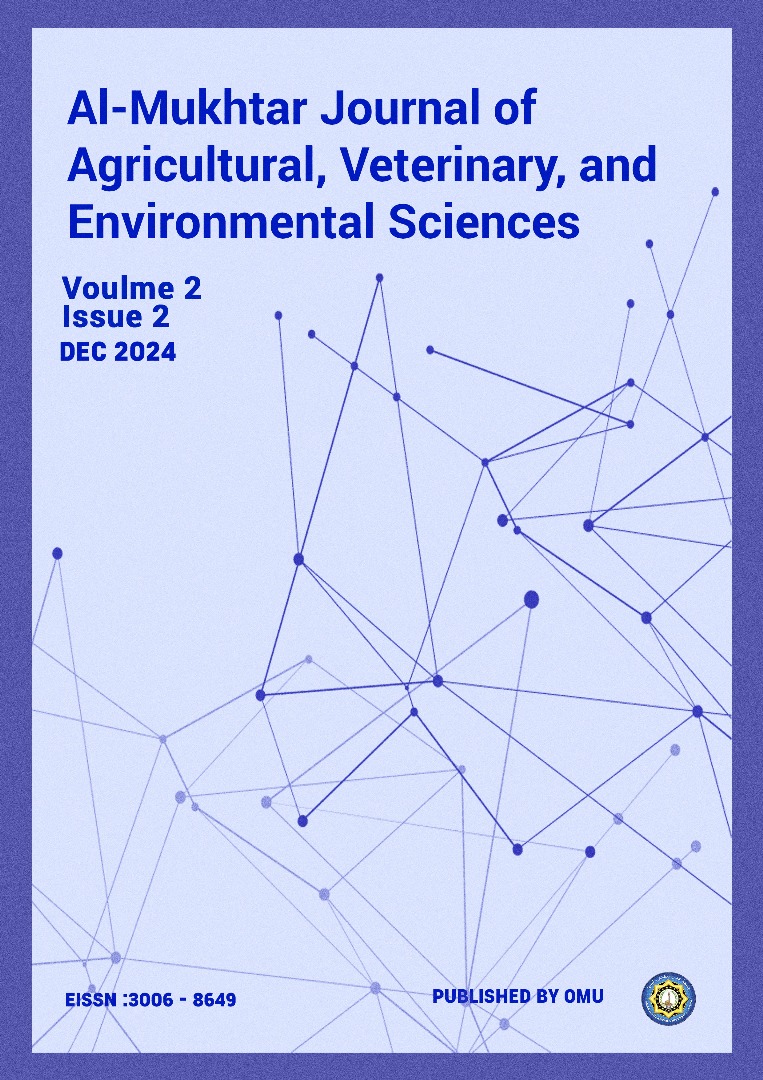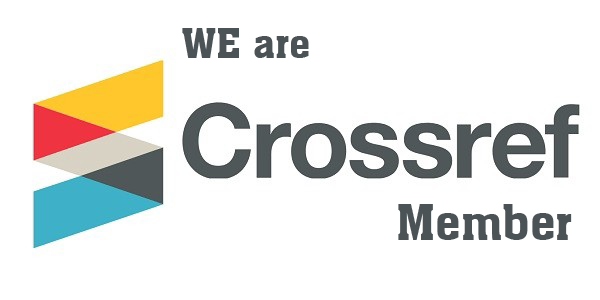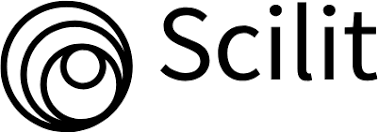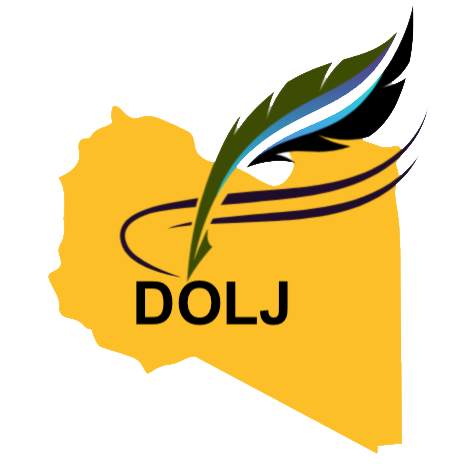Investigation of fungi contaminating broiler feed in some poultry farms in Syria
DOI:
https://doi.org/10.54172/a5zeqg31Keywords:
Fungal Genera, Raw Feed (Starter), Manufactured feed, Broiler, FarmsAbstract
Fungi contaminating poultry feed are considered a reason for the decrease in their nutritional value, and a major cause of diseases in poultry. Information about fungi contaminating poultry feed is not available locally. Therefore, this study aimed to investigate fungal contamination of both raw and manufactured feeds used on six different farms dedicated to raising poultry (broiler) in Tartous Governorate - Syria, during the period extending from October 2023 to January 2024; By growing samples of these feeds in the laboratory on Potato Dextrose Agar (PDA) culture, to determine the fungal genera present in those studied feeds. 290 fungal isolates were obtained (169 isolates from raw feed, 121 isolates from manufactured feed) belonging to five genera of filamentous fungi and yeasts, including Aspergillus spp. (36.2%), followed by Yeast spp. (33.8%), Penicillium spp. (4.8%), Mucor spp. (3.8%), and the fungus Trichoderma spp. (1%), and it was found that Aspergillus spp. Fungi were the most common (34.3%, 38.8%) in the raw and manufactured feeds, respectively. The study concluded that the detection of fungi contaminating poultry feed is of great importance, due to their health risks to poultry.
References
Abo-Shama, U.H. (2015). The investigation of pathogenic fungi in poultry feed in some selected poultry farms in Sohag Governorate, Egypt. J Microbiol Biotech Res, 5(6):1-8.
Anifowose, O.R., Adetolase, A. and Bakre, A.A. (2021). Evaluation of Fungal Contamination in Poultry Feeds During the Rainy Season in Ogun State, Nigeria. AJVS, 69 (1): 107-112.
Bennett, J.W. (2010). An overview of the genus Aspergillus. In: Aspergillus Molecular Biology and Genomics (pp. 1 – 17). Caister Academic Press, Norfolk, UK.
Ghaemmaghami, S.S., Modirsaneii, M., Khosravi, A.R. and Razzaghi-Abyaneh, M. (2016). Study on mycoflora of poultry feed ingredients and finished feed in Iran. Iranian journal of micro-biology, 8(1): 47 – 54.
Ghaemmaghami, S.S., Nowroozi, H. and moghadam, M.T. (2018). Toxigenic Fungal Contamination for Assessment of Poultry Feeds: Mashed vs. Pellet. Iranian Journal of Toxicology, 12(5): 5 – 10.
Greco, M.V., Franchi, M.L., Rico, S.L., Pardo, A.G. and Pose, G.N. (2014). Mycotoxins and myco-toxigenic fungi in poultry feed for food-producing animals. Sci World J, 968215.
Iamanaka, B.T., Oliveira, I.S. and Taniwaki, M.S. (2010). Micotoxins Em Alimentos. Anais da Ac-ademia Pernambucana de Ciência Agronômica, 7: 138-161.
Jones, F.T. (2011). A review of practical Salmonella control measures in animal feed. Journal of Applied Poultry Research, 20(1):102-13.
Magkos, F., Arvaniti, F. and Zampelas, A. (2003). Putting the safety of organic food into perspec-tive. Nutrition Research Reviews, 16(2): 211-22.
Najiha, J. (2019). Biological control of the fungus Aspergillus flavus contaminating poultry food using Pichia anomala bacteria and Bacillus megaterium yeast. Ph.D. thesis. Department of Microbiology, Faculty of Natural and Life Sciences, Farhat Abbas University, Setif 1, Peo-ple's Democratic Republic of Algeria.
Okoli, I.C., Nweke, C.U., Okoli, C.G. and Opara, M.N. (2006). Assessment of the mycoflora of commercial poultry feeds sold in the humid tropical environment of Ino State, Nigeria. In-ternational Journal Environ Sciences, 3(1): 9-14.
Pitt, J.I. and Hocking, A.D. (2009). Fungi and Food Spoilage. Springer Dordrecht Heidelberg Lon-don, Cambridge, New York.
Richard, J.L. (2007). Some major mycotoxins and their mycotoxicoses—An overview. International journal of food microbiology, 20,119(1-2): 3-10.
Saleemi, M.K., Khan, M.Z., Khan, A. and Javed, I. (2010). Mycoflora of poultry feeds and myco-toxins producing potential of Aspergillus species. Pakistan journal of Botany, 42(1): 27-34.
Samson, R.A., Houbraken, J., Thrane, U., Frisvad, J.C. and Andersen, B. (2010). Food and indoor fungi. CBS-KNAW Fungal Biodiversity Centre, C B S Laboratory Manual Series.
Shareef, A.M. (2010). Molds and mycotoxins in poultry feeds from farms of potential mycotoxico-sis. Iraqi Journal of Veterinary Sciences, 24(1).
Stuper, K., Renata, C.R., Szablewski, T., Ostrowska, A., Busko, M. and Perkowski, J. (2015). Con-tamination with microscopic fungi and their metabolites in chicken feed produced in western Poland in the years 2009-2010. Act Sci Pol Zootechnica, 4(3): 107-122.
Downloads
Published
License
Copyright (c) 2024 Ammar M. Mostafa, Tawfek K. Dalla, Fahem A. Abdalaziz, Munzer S. Tamouz (Author)

This work is licensed under a Creative Commons Attribution-NonCommercial 4.0 International License.













